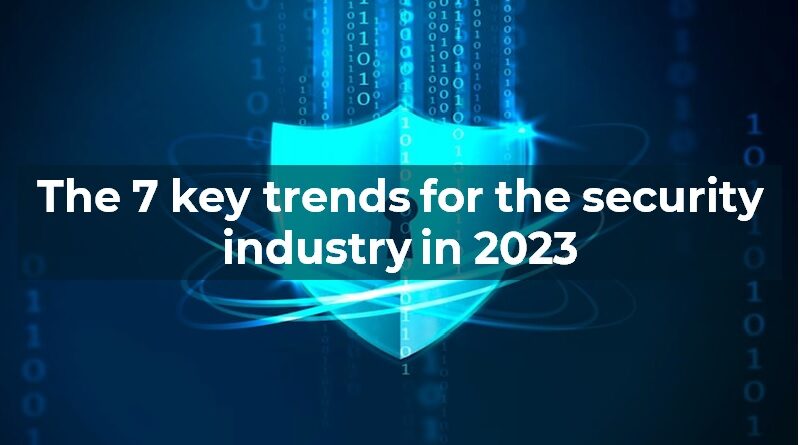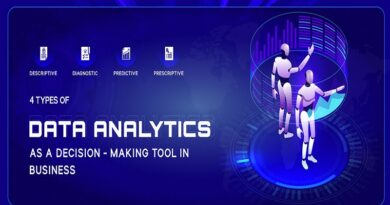The 7 key trends for the security industry in 2023
In recent years, the physical security sector has seen significant change. In this constantly changing business, cutting-edge technology advancements and applications, like AI, machine awareness, and IoT, are always pushing the envelope. Security systems have evolved to be thoroughly integrated, comprehensive, and capable, and they are increasingly taking on more intelligent activities to increase security and other operational function efficiency. And all of this is taking place in a variety of different organisations and sectors.
Hikvision would like to offer some insights on seven trends that are developing in the security sector as we head into 2023.
1. Because AI applications are so varied, more open ecosystems are needed.
We’ve seen a wider range of AI solutions and apps that regularly assist in resolving challenging issues and satisfying the varied needs of customers. The industry is also investigating AI’s textual and aural capabilities, starting with visual AI. For instance, AI-powered audio anomaly detection is being utilised in industrial settings to find equipment problems and improve worker safety. Additionally, supervised learning is being replaced with self-learning AI technology, which trains and improves considerably more quickly.
More ecosystems with open technologies, open resources, and even open protocols are needed for industrial cooperation in order to accomplish all of this. Our industry has a lot of opportunity for open technologies like container and virtualization technology, which is making hardware products more open
2. AIoT is still helping to connect the physical and digital worlds.
As artificial intelligence develops, we think that the AI and IoT (AIoT) trend will continue to be very popular in 2023, changing the security industry’s reach. There are now more AIoT solutions available that will not only provide smart defences but also foster effective operations in a variety of sectors and organisations.
AIoT will provide up a crucial route for accelerating digital transformation across numerous industries. By building a digital doppelganger that joins the real and virtual worlds, this can be accomplished. For instance, in the administration of industrial parks, virtual sites can be developed using 3D modelling, using VR and AR technologies to replicate and reflect the real ones, and equipping them with dynamic vision to act fast and ensure the smooth operation of the entire site.
3. With 24/7 imaging technologies, visual experiences are enhanced.
Video security users’ top priority is to capture crisp, colour surveillance footage around-the-clock, but the hardest part of doing so has always been the night’s low light.
We are now witnessing the removal of these difficulties due to the development of numerous new imaging technologies. Infrared and visible light images are combined using bi-spectrum image fusion technology, which uses two sensors, to reproduce vibrant colours in low-light environments. Deep learning methods are used by artificial intelligence-based image signal processing (IA-ISP) technology to significantly enhance visual noise reduction and enhance the night image.
4. The powers of perception are more diverse.
Sensing capabilities for security applications are expanding the physical world’s sensing capabilities in novel ways by reaching well beyond visible light and across the electromagnetic spectrum. For instance, optical irradiance and eutrophication features have been analysed using hyperspectral imaging technology to track trends in water quality in rivers and lakes. Radar products are used to measure vehicle speeds and distances in the millimetre wave spectrum. The X-ray spectrum has been extensively used in safety inspections, and it is now expanding its applicability to the identification of faults in industrial machinery.
Additionally, these multi-dimensional sensing capabilities combine to produce creative solutions that can take advantage of a variety of new operations, including alarm systems, sonar and video array integration solutions for traffic management, and radar-assisted video systems for perimeter protection. incorporates a variety of detectors for applications in smart homes.
5. Increased emphasis on system and device usability
Because of the labour crisis and rising costs in our sector, there is greater attention being paid to how security professionals use devices and systems on a daily basis. Manufacturers are being forced by this trend to improve their goods with simpler setup procedures and better interactive experiences that will cut down on installation time, costs associated with equipment upkeep, and time needed to gain new skills.
For instance, as this streamlined, interactive procedure is optimal, we are seeing more installers favour mobile apps over PCs for device installation and maintenance.
6. To maintain sustainability, business moves to cleaner, lower-carbon methods of operation.
Green manufacturing trends and low-carbon security sector activities are particularly motivating. Longer-lasting goods, recyclable materials and packaging, and the usage of renewable energy are all being adopted by security manufacturers. Each of these strategies lowers emissions and waste. For instance, demand for solar-powered cameras is always growing as a result of their proven ability to harness the free, unrestricted energy of the sun.
And more businesses in the sector have established medium- to long-term targets for environmental stewardship in manufacturing and everyday operations, ranging from lower carbon production, efficient energy use, waste and chemical management, to cleaner office environments. ecological.
7. Zero Trust is still the go-to cybersecurity tactic.
Because customers and regulators are more concerned with their data security and privacy and have set greater standards and demands on this problem, cybersecurity continues to be a very important and complex issue for all sections of our industry. We see value in bringing up the Zero Trust concept so that everyone will think about it when planning cybersecurity strategies.
A strategic initiative called “Zero Trust” aims to prevent data breaches by doing away with the idea of trust from a company’s network architecture. The vulnerability of trust in cybersecurity. According to the “never trust, always verify” maxim, our linked systems must adhere to the Zero Trust approach to cybersecurity.




